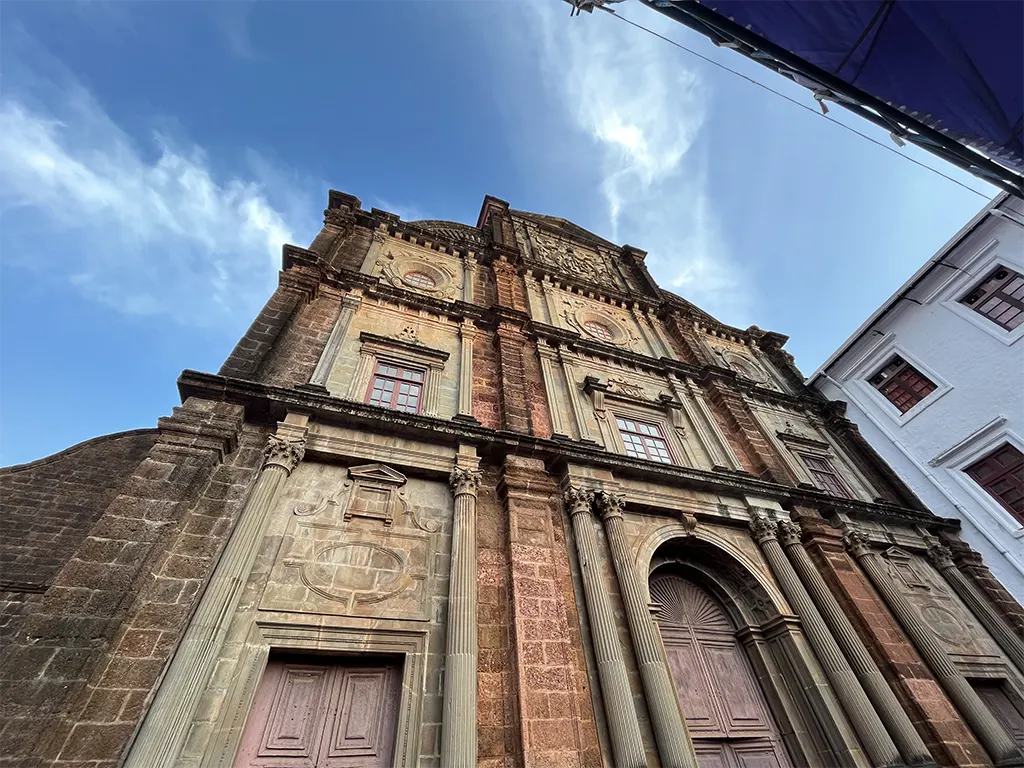Old Goa Church is a magnificent architectural wonder that showcases the rich history and cultural heritage of India. Located in the state of Goa, it is a UNESCO World Heritage Site that attracts visitors from all over the world. This article takes you on a journey to explore the fascinating history and architecture of Old Goa Church.

Table of Contents
Introduction
Old Goa Church, also known as the Basilica of Bom Jesus, is a 16th-century Catholic Church located in Goa, India. It was built in 1594 and is one of the most popular tourist destinations in India. The church is famous for its unique Baroque architecture, stunning paintings, and sculptures. It is a testament to the influence of Christianity in India and a symbol of the country’s religious diversity.
The History of Old Goa Church
The history of Old Goa Church dates back to the 16th century when the Portuguese arrived in India. The church was built by the Portuguese to spread Christianity in the region. It was dedicated to the infant Jesus and is one of the oldest churches in India. The church was damaged during the invasion of the Marathas in the 17th century, but it was later restored by the Portuguese.
The Architecture
The architecture of Old Goa Church is a beautiful blend of Indian and European styles. The church is built in the Baroque style, which was popular in Europe during the 16th century. It has a simple yet elegant façade with intricately carved columns and arches. The interior of the church is equally stunning, with ornate altars, frescoes, and paintings.
The Attractions of Old Goa Church
Old Goa Church is home to some of the most stunning attractions in India. The church has a beautiful altar made of marble and inlaid with precious stones. It also houses the remains of St. Francis Xavier, a prominent Christian missionary who worked in India in the 16th century. The church also has a museum that showcases the history and cultural heritage of Christianity in India.
The Significance of Old Goa Church
Old Goa Church is not just a historical and architectural marvel, but it is also a significant pilgrimage site for Christians in India. The church is a symbol of the country’s religious diversity and is an important part of India’s cultural heritage. It is a place where people come to seek solace, pray, and connect with their faith.
How to Reach Old Goa Church
Old Goa Church is located in the state of Goa, which is well connected by air, rail, and road. The nearest airport is the Dabolim Airport, which is located around 29 km from the church. The nearest railway station is the Karmali Railway Station, which is around 10 km from the church.
Best Time to Visit Old Goa Church
The best time to visit Old Goa Church is between the months of October to March when the weather is pleasant and mild. During this time, the church also hosts various religious festivals and cultural events, which are a sight to behold.
Tips for Visiting Old Goa Church
If you are planning to visit Old Goa Church, here are some tips that will come in handy:
- Dress appropriately and modestly as it is a religious place.
- Photography is not allowed inside the church.
- Do not disturb the peace and serenity of the place.
- Respect the traditions and customs of the church.
Conclusion
Old Goa Church is a beautiful testament to India’s cultural diversity and religious harmony. It is a must-visit place for anyone interested in history, culture, and architecture. The church is a place of peace and solace, and it leaves a lasting impression on anyone who visits it.
FAQ’s
Yes, anyone can enter Old Goa Church. However, visitors are expected to dress modestly and respectfully as it is a religious site.
No, there is no entrance fee to visit Old Goa Church. However, donations are welcome to help maintain and preserve the church.
Yes, there are many other attractions near Old Goa Church. Some of the popular ones include the Se Cathedral, St. Augustine Tower, and the Archaeological Museum.
It usually takes around 1-2 hours to explore Old Goa Church, but the duration can vary depending on the individual’s interests and preferences.